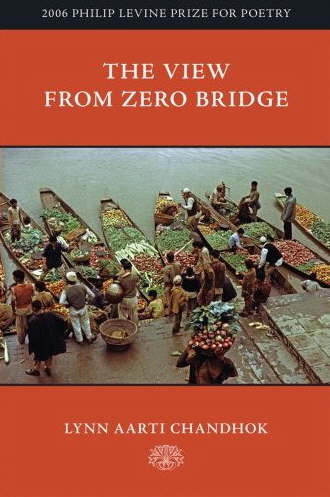 Maceo Montoya. The Scoundrel and the Optimist. Tempe, Arizona: Bilingual Review Press, 2009. $28 cloth (ISBN 978-1-931010-65-8), $18 paper (ISBN 978-1-931010-67-2), 266 pages.
Maceo Montoya. The Scoundrel and the Optimist. Tempe, Arizona: Bilingual Review Press, 2009. $28 cloth (ISBN 978-1-931010-65-8), $18 paper (ISBN 978-1-931010-67-2), 266 pages. Reviewed by Bradley Bazzle
Maceo Montoya’s debut novel, The Scoundrel and the Optimist, is about a runty teenager named Edmund (the optimist) and his drunken lout of a father, Filastro (the scoundrel). The novel’s first sentence establishes their relationship: “Of Filastro Augustín’s seven children, the only one he couldn’t bear to beat was his youngest son, Edmund.” Filastro spares Edmund because he hopes one of his children will take care of him in his old age. As a result, Edmund knows a Filastro quite different than the tyrant who abuses his mother and siblings. Most of the novel weaves deftly between the story of those siblings, who escape one by one to the United States, and the story of Edmund pursuing beautiful young Ingrid Genera by learning to play guitar. All this takes place in a small Mexican town peopled with eccentrics.
Don’t be fooled by the insipid jacket summary (“a hapless but irrepressible redheaded teen whose magnificent strength of spirit makes him a giant among men”); this is a vigorous book, full of humor and gnarled beauty, whose simple, furious language captures the world of a precocious adolescent. Jags of humorous dialogue ring true because Edmund simply has no filter. When Ingrid resists his advances, he blurts
that she looks like a horse. Why? Because she has “skinny bow legs.” The exchange is funny, but it also reveals the unthinking cruelty Edmund shows to those around him. In this way, Montoya draws a disturbing but essential parallel between knavish Edmund and boorish Filastro. Along the same lines, though Filastro is the adult and Edmund the child, there is something desperately childish about Filastro’s drunkenness: he uses peer pressure to drag his compadres on benders complete with jokey rules, benders that, in an adult world, prove deadly. One way to read the novel is as Edmund and Filastro’s journey from self-centered children to empathetic adults.
Montoya seems to delight in goofiness. Because of this, the novel’s minor characters, who aren’t burdened by interiority or narrative importance, stand out. The infamous loan shark, Tres Pasos, agrees to give Edmund his dead son’s guitar if the boy will listen to his best three hundred stories—funny, morally ambiguous anecdotes (a Mexican gangster version of the Arabian Nights) that pepper the novel. Ricardo the Notary makes his living typing letters from aging mothers to their children in the United States, adding morbid literary touches whenever possible. When he types “goodbye” letters from Filastro’s estranged children to Filastro, Ricardo interpolates his unsettled issues with his own father to hilarious effect. But the best of them all is Edmund’s cousin Jorge el Gato, called “the cat” because he may or may not have attempted, on a dare, intercourse with a cat. His is the unlikely voice of wisdom throughout the novel, dispensed over popsicles from the cart he pushes around town.
This novel comes to us from the Bilingual Review Press at Arizona State University, which publishes books “by or about U.S. Hispanics” (from their website: www.asu.edu/brp). Though The Scoundrel and the Optimist is successful because it’s a good story about engaging characters, it draws additional power from its cultural relevance. It’s no imaginative lark that Edmund is named Edmund, a name so Anglo that it barelyexists in the U.S., let alone Mexico. The name conjures the supremely English Edmund Bertram of Mansfield Park and Edmund Pevensie of The Chronicles of Narnia. The curious name, along with the humor and somewhat picaresque structure of The Scoundrel and the Optimist, places it in conversation with the coming-of-age novels of an earlier era, novels like Charles Dickens’s David Copperfield and Mark Twain’s The Adventures of Tom Sawyer. Montoya seems to be asking the reader whether Edmund, but for his location in Mexico, is any different from the heroes of Dickens and Twain. The answer is no. And Montoya adds a twist to the coming-of-age form: Edmund never reads as a proxy for the brilliant young artist, stifled by the people around him and biding his time before writing a deeply moving novel about himself; instead, Montoya lampoons that tradition (and himself) in the wretched figure of Ricardo the Notary.
In the interest of honesty, I should set aside my praise and tell you that this is not a perfect novel. The abrupt prose style used in passages written from the point of view of Edmund bleeds into shorter passages from the points of view of adult characters, and as a result, the adults lack appropriate complexity. The mother, for instance, simply cries or is silent in reaction to Filastro’s cruelty, because the novel hasn’t given her language to express what are surely conflicted emotions. There is also a hooker with a heart of gold. Lastly, the ending may not be quite right, in that it’s convincing from the perspective of Edmund but not from the perspective of Filastro. But isn’t it the sign of a good book when you care if the ending is wrong?















